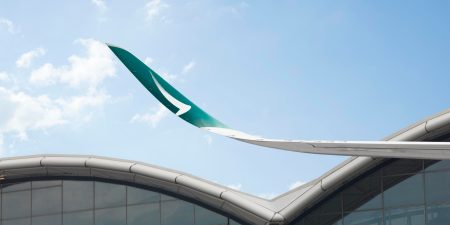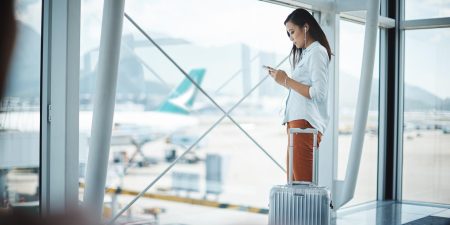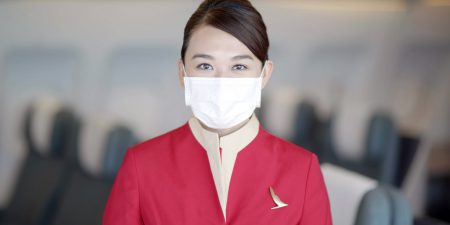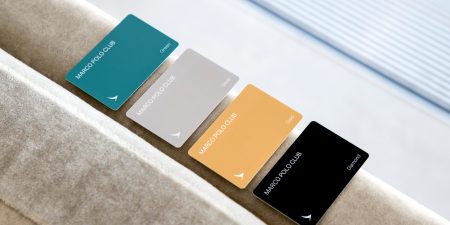Cathay Pacific staff recall fond memories of the iconic Boeing 747 The “Queen of the Skies”, which will soon retire from the airline’s passenger fleet, has played a pivotal role in transforming Cathay Pacific and developing Hong Kong as an international aviation hub
The 747, one of the most successful commercial aircraft of all time, first joined the Cathay Pacific fleet in 1979 and made an almost immediate impact – on the company’s fortunes, on its staff and even on the airline’s home city of Hong Kong.
Capable of carrying upwards of 400 passengers, more than double the number of the Boeing 707, the aircraft it replaced, and for far greater distances, the arrival of the more fuel-efficient 747 enabled Cathay Pacific to rapidly expand its network to European and North American destinations throughout the 1980s and 1990s, thereby increasing Hong Kong’s connectivity to the wider world.
“The 747 fundamentally changed the way people were able to travel,” says Cathay Pacific General Manager Operations Mark Hoey, a former Chief Pilot of the 747. “Being able to carry more people for far greater distances than before meant the 747 effectively shrunk the planet. The aircraft had a vital effect on the development of Hong Kong as an international aviation hub – and indeed, Hong Kong’s economic and tourism prospects. As a result, it helped make Hong Kong become a world city.”
During its time as Cathay Pacific’s sole long-haul aircraft type, up until the mid-1990s which saw the arrival of the Airbus A340, the 747 helped the airline quadruple its annual passenger figures – from 2.5 million carried in 1979 to 10.4 million in 1995. Visitor numbers to Hong Kong over the same period grew almost identically – from 2.2 million in 1979 to 10.2 million in 1995.
The airline’s expansion during the 1980s was undoubtedly an exciting period for Cathay Pacific – and no more so than for its cabin crew, who found themselves flying regularly to the glamorous new long-haul destinations of the era: London, Paris, Rome and Vancouver.
“It was my dream to travel the world, and it was thanks to the 747 that I was able to do so,” says Cathay Pacific Inflight Service Manager Monica Tong, who started her career as a flight attendant 30 years ago this month and who estimates to have worked on over 1,000 747 flights. “The size of the aircraft helped build camaraderie between the crew – we flew in a bigger group and on longer routes, which meant we spent more time together and got to learn more about each other.”
The spacious cabins of the 747 also proved immediately popular with passengers, as did the aircraft’s enhanced inflight entertainment options, which were significantly more advanced than those of the Lockheed L-1011 TriStar, which Cathay Pacific operated on short- and medium-haul routes. “At first, the 747s were equipped with screens in each cabin so we could show movies, but the personal televisions (PTVs) and audio-video on demand systems (AVOD) on later 747s were a major advancement,” adds Monica.
In the 15 years following the 747’s introduction, Cathay Pacific trebled the size of its workforce – from approximately 5,000 to nearly 15,000, making the airline one of Hong Kong’s largest employers, which resulted in significant career advancement prospects for its staff.
“Because the airline was growing so quickly – there were upwards of 40 cabin crew induction classes per year – the opportunity for promotion came regularly,” remembers Cathay Pacific Manager Inflight Services Standards and Safety Le Le Ng, who joined the airline as a flight attendant in the early 1980s. “And it was the 747 that cabin crew wanted to be assigned to. The long-haul destinations were one reason, of course, but the 747, because of its spaciousness and modern features, provided a superior working environment too.”
Although the 747’s operating economics can no longer compete with Cathay Pacific’s more modern, twin-engine aircraft, such as the Boeing 777 and Airbus A350, the “Queen of the Skies” has given the airline 37 years of impeccable service and has certainly earned its retirement.
One man for whom the aircraft’s departure from Cathay Pacific will prove to be especially poignant is Tony Britton, who spent more than 30 years working on the 747 as an engineer.
“The 747 is the last of the ‘old school’ aircraft to have been built – and I will miss it dearly,” says Tony, who is now employed as Aircraft Project Manager – Lease Return and Disposal. “The 747 was fantastic to work on because it was such a cerebral aircraft, very reliable and, for aircraft engineers, straightforward to understand. It became an aircraft that engineers knew inside out.”
“I dare say many Cathay Pacific staff will feel sad – many have a very close attachment to the aircraft, so it does feel like it is the end of an era. I will certainly be one of them. It will be an emotional moment when the last passenger 747 departs the fleet for the very last time.
“It has been a part of Cathay and Hong Kong for so many years …”










